How to Read Tree Growth Rings
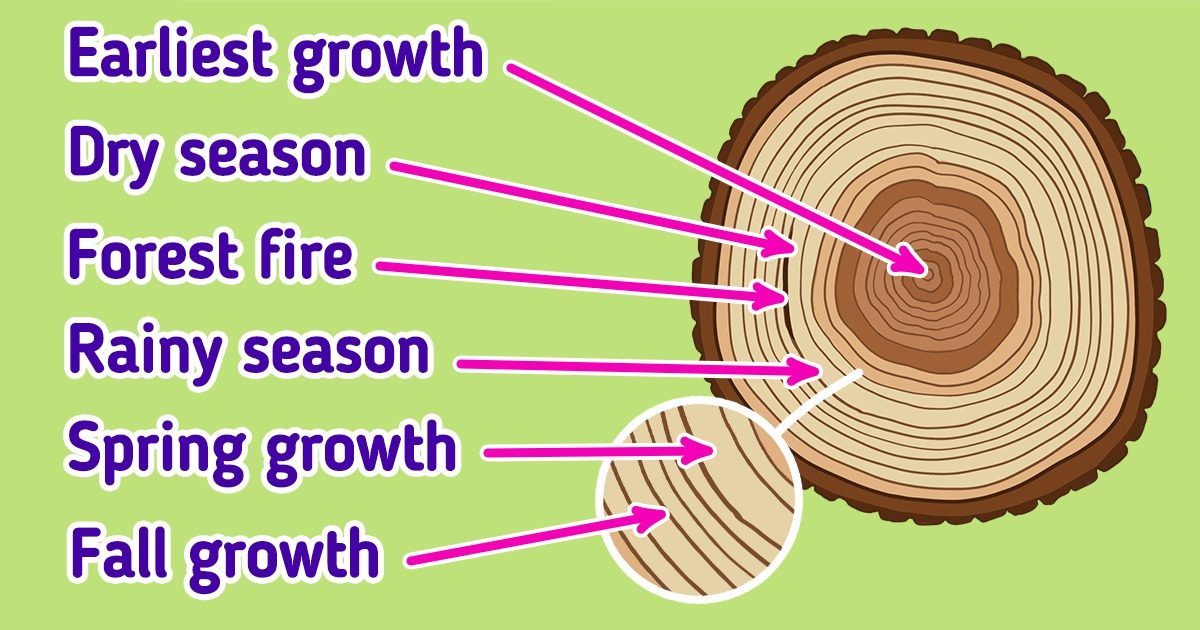
When we look up at huge trees, we often wonder how long they’ve been around. Every tree is different — some live for less than a century, while others live for longer. Every year, a tree adds more to its girth, and this new growth is known as a tree ring. And these rings tell you a lot more about a tree than its age. 5-Minute Crafts would love to enlighten you on this topic.
1. Reading the light and dark rings
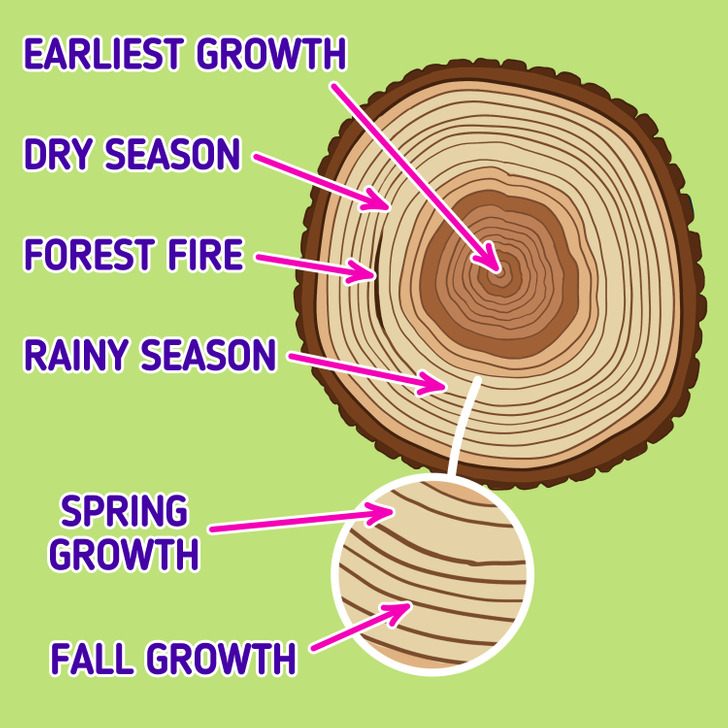
If you see a tree stump, you may find that the top surface has a lot of concentric rings in light and dark shades. These rings depict the age of the tree and the type of weather during each year of the tree’s life.
The light rings mean that the wood has grown during the spring and early summer, whereas the dark rings mean that the wood grew in the late summer and fall. When you add one light ring and one dark ring, it states one year of the tree’s life. To calculate the tree’s years, all you need to do is count the dark rings.
The newly formed tree ring is the new wood you will find near the outer part of the trunk. This is located beneath the bark. The oldest rings are near the center and are smaller in size.
2. Understanding the wide and narrow rings
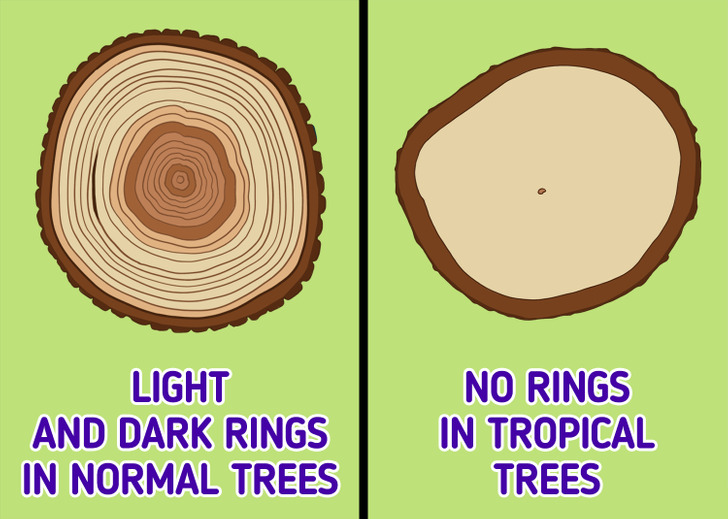
Weather conditions also influence the growth pattern of a tree and its rings. It gives away a lot of information about the past climate of the area. In warm and wet weather, the tree rings grow wider. And when the tree grows in cold and dry weather, the rings are thinner and narrow. If the tree has gone through extreme weather conditions, like a drought, it may stop growing altogether.
If a tree grows in a tropical region, you may not find any rings visible on its trunk. This is because tropical trees grow at a uniform speed, and there may not be any color variation visible in the rings.
3. The building of reaction wood
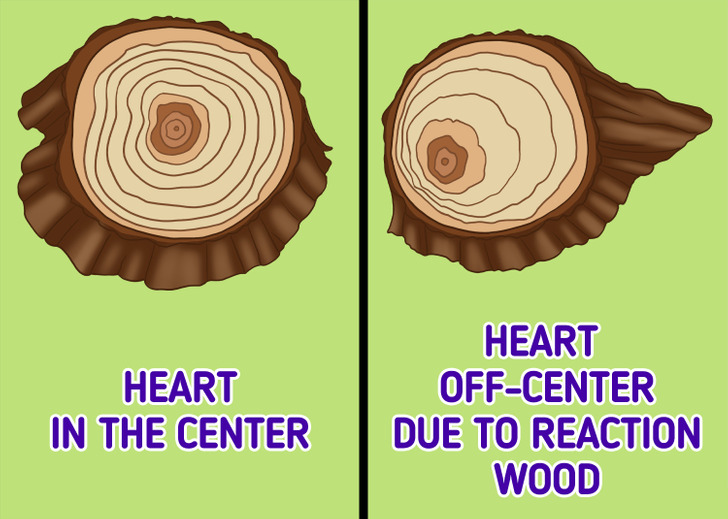
Sometimes you may find inconsistent rings, such as wider ones on one side and narrower ones on the other, or you may find that the heart of the tree is off-center. This indicates that something was pushed against the tree while it was growing. If this happens, the tree will have a reaction in the wood to support the side that is being leaned on.
Off-center growth in trees also means that the tree was subjected to the high winds — the wood tends to grow rapidly, showing wider rings on the opposite side from the winds.
4. Looking for burn scars
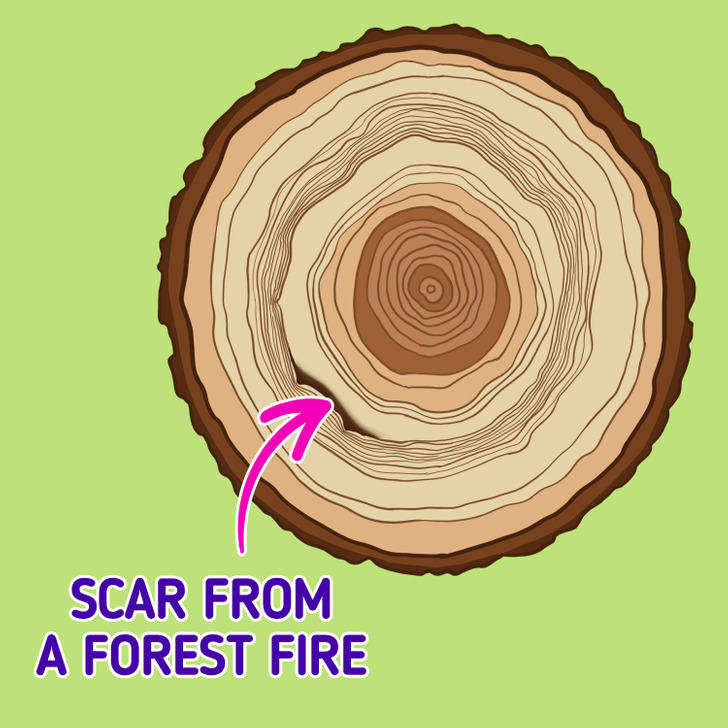
Scarring on a tree’s bark indicates that there had been a fire in the forest. As the years go by, more wood will keep growing to cover the scar. But you can clearly see it in the life history of the tree.
5. Understanding additional reasons for narrower scars
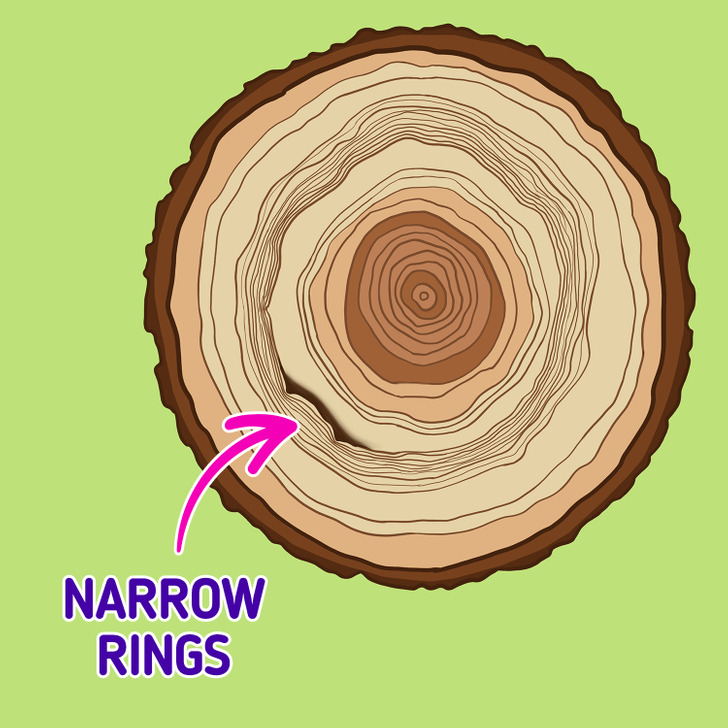
If you see narrow rings in continuation, this means that the area suffered from a drought. When there is a lack of water over a long time, it may ultimately slow down a tree’s growth. Sometimes it even stops the growth completely. Sometimes a forest fire may affect the tree’s crown in a way that halts its growth as well.
Another reason for the occurrence of narrow tree rings is insect infestation. For example, if there is a larva from a sawfly infestation, they’ll eat the leaves and leaf buds of various types of coniferous trees.